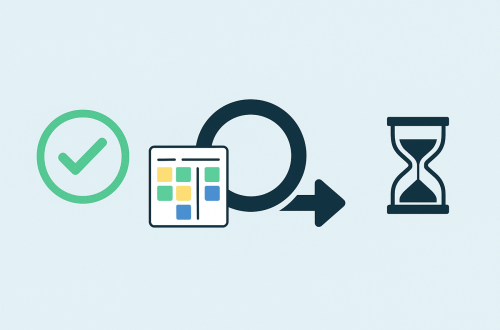
Optimizing Scrum Task Language: Essential Tips for Clear Communication and Team Alignment
In the world of Agile Scrum, the clarity and precision of language in scrum tasks are more than mere formalities; they are critical components that drive the efficiency and success of project management. This blog post explores the common language that should be used in Scrum tasks to align with the Scrum framework and ensure clarity for all team members.
Be Concise and Specific
Scrum thrives on directness and specificity. Tickets and tasks should be concise yet detailed enough to provide clear expectations. Avoid vague terms and open-ended descriptions, as they can lead to misinterpretation and scope creep. For instance, instead of writing “Improve website speed” specify the requirement like “Reduce the page loading time of the homepage to under 2 seconds on a 3G network“.
Example of a task wording not in line with Scrum requirements:
“Successfully Integrated the Third-party Script tag.“
- Focuses on Past Tense: This task begins by referencing a past tense completion, which doesn’t directly address current needs for the task.
- Outcome-focused: It doesn’t necessarily align well with an active or future task.
“Update the setup on the dashboard”
- Vague language: Doesn’t specify which part of the dashboard or what kind of update is required.
Example of a task wording inline with Scrum requirements:
“Implement OAuth integration for user authentication”
- Clarity and directives: It clearly states what needs to be done. There is no ambiguity about the task itself.
- Defined Scope: The task is scoped in a way, which pinpoints the area of the application that will be affected or needs attention.
“Update user guide with new navigation instructions”
- Clear and specific objective: The tasks specifies exactly what needs to be updated
- Actionable Language: The verb “update” is direct and actionable, setting clear expectations.

Use User Stories
Incorporating user stories into your tickets is a powerful way to maintain focus on the user’s needs. User stories typically follow the format: “As a [type of user], I want [some goal] so that [some reason].” This structure helps keep the team aligned on who the end user is, what they need, and why. It also frames tasks in a context that is easy for all team members to understand and relate to.
To learn more about User Stories head to our How to create User Stories article.
Define Acceptance Criteria Clearly
Each scrum task should include clear, measurable acceptance criteria. These criteria are essential for developers to know precisely when a task is completed and to what standard. Acceptance criteria should be objective and testable, such as “The login page will authenticate users within 50 milliseconds,” rather than subjective statements like “The login page should be fast“.
Good Example of Acceptance Criteria
“The homepage must load within 2 seconds for users on a 4G network as measured by Google PageSpeed Insights”
- Clarity and Precision: This criterion is incredibly specific. It defines the work in quantifiable way
- Measurable Metrics: The use of Google Page Speed insights as the measurement tool provides a standard, recognised method for testing.
“The login functionality shall authenticate users using OAuth and return a response within 50 milliseconds under normal operating conditions.”
- Detailed Functionality: This criterion explicitly mentions using OAuth for authentication. spefifying the technology or method to be used.
- Quantifiable Performance: It states that the response must return within 50 milliseconds, which is a clear, measurable performance target.
Bad Examples of Acceptance Criteria
“The homepage should load quickly.”
- Issue: This is subjective and does not specify what “quickly” means in a measurable way.
“The registration process should be user-friendly.”
- Issue: “User-friendly” is a subjective term that could vary widely in interpretation and doesn’t provide clear, testable criteria.
Use Common Language and Avoid Jargon
While technical terms are sometimes unavoidable, it’s important to use common language that all team members can understand. Avoid overly technical jargon unless it is commonly understood by the team. If specialised terms must be used, consider maintaining a glossary that the team can refer to, which is especially helpful for new team members or non-technical stakeholders
Original Technical Statement as a Bad Example
“Ensure the API endpoints conform to RESTful architecture standards and serialize data responses in JSON format according to the RFC 8259 standard, handling statelessness through client sessions.”
Revised Statement
“Make sure our API links (endpoints) follow the best practices for web services (RESTful architecture) and format the information they send back (data responses) in a common web format (JSON), as recommended by widely recognized web standards. This setup should not require the server to remember any previous interactions (statelessness) and should manage this using user session data”
The revised statement breaks down the technical requirements into simpler terms:
- “API endpoints” become “API links (endpoints)“ to clarify that these are points of communication for APIs.
- “RESTful architecture standards” are explained as “best practices for web services”, which is easier for non-technical team members to grasp.
- “Serialize data responses in JSON format” is simplified to “format the information they send back (data responses) in a common web format (JSON)”, making it clear what serialisation means in this context.
- “RFC 8259 standard” is referred to as “widely recognised web standards”, avoiding specific references that may not be understood without looking them up.
- “Handling statelessness through client sessions” is simplified to “this setup should not require the server to remember any previous interactions (statelessness) and should manage this using user session data”, explaining what statelessness is and how it is achieved.




